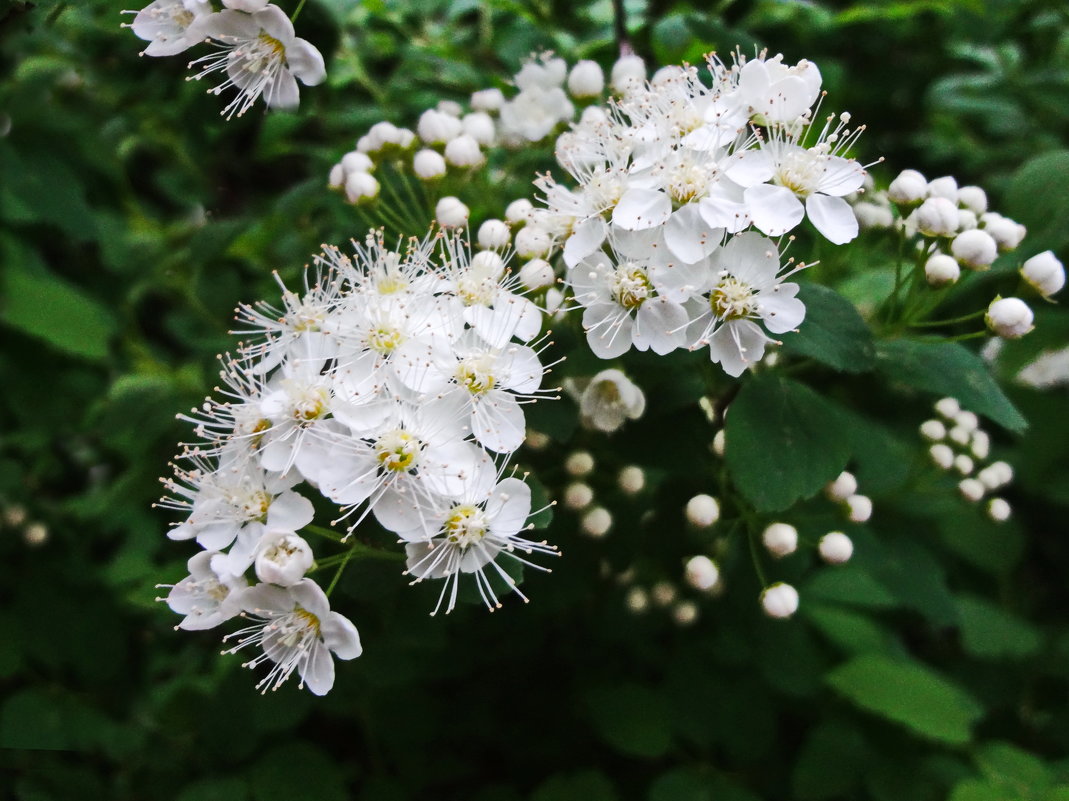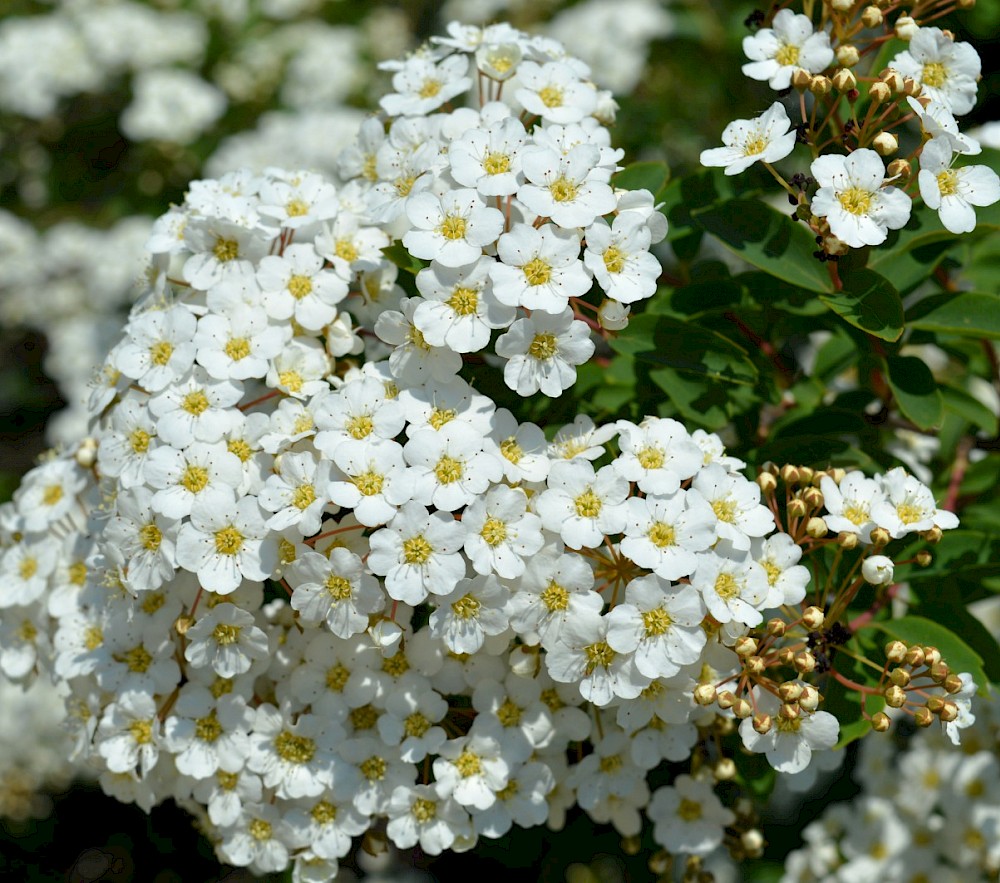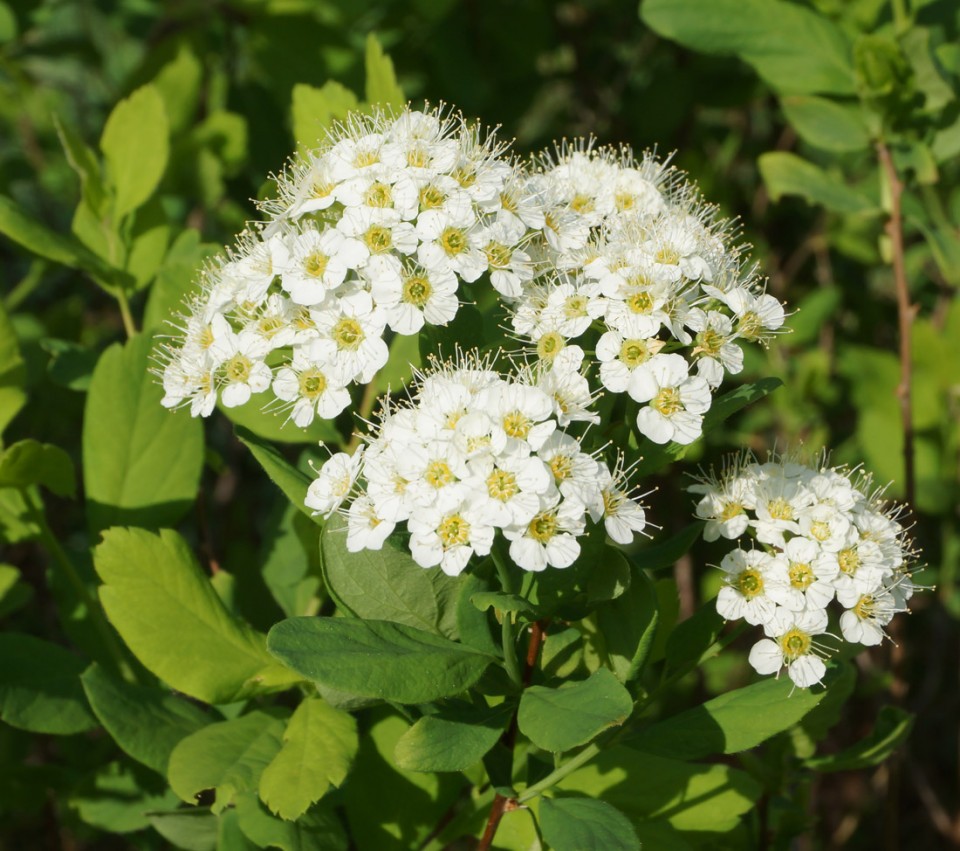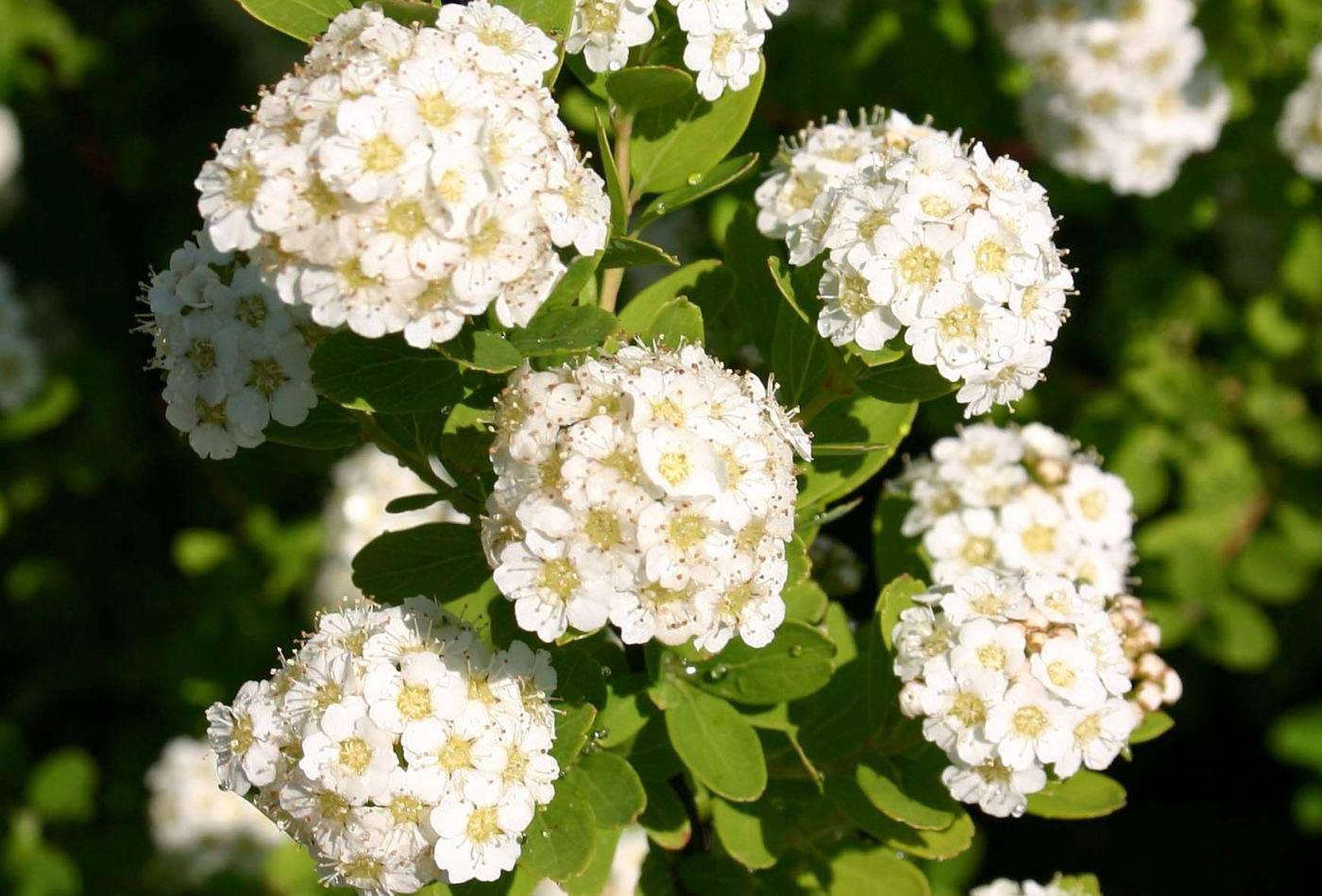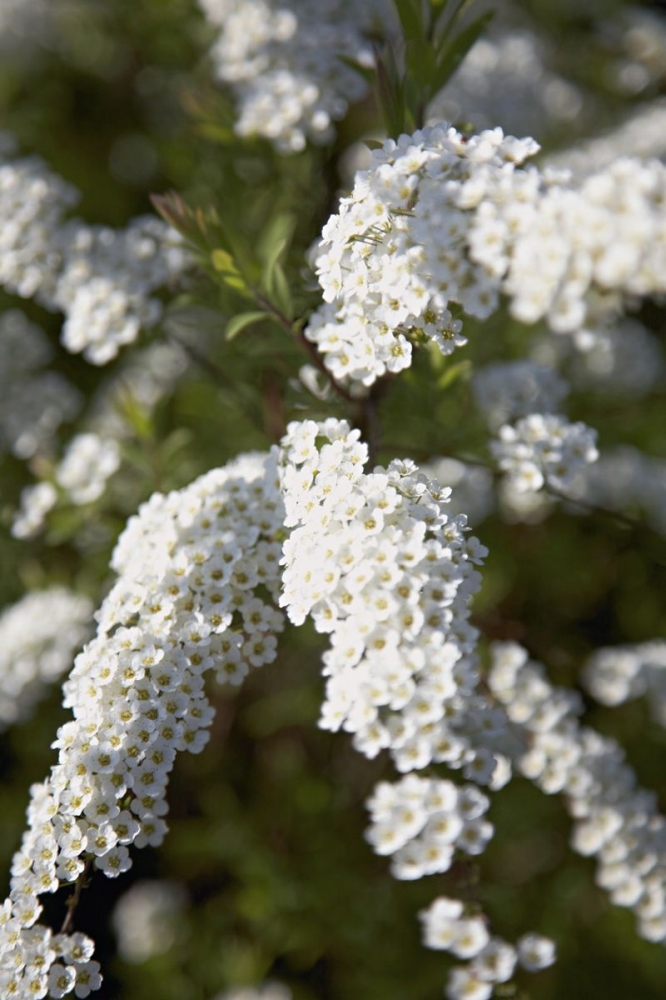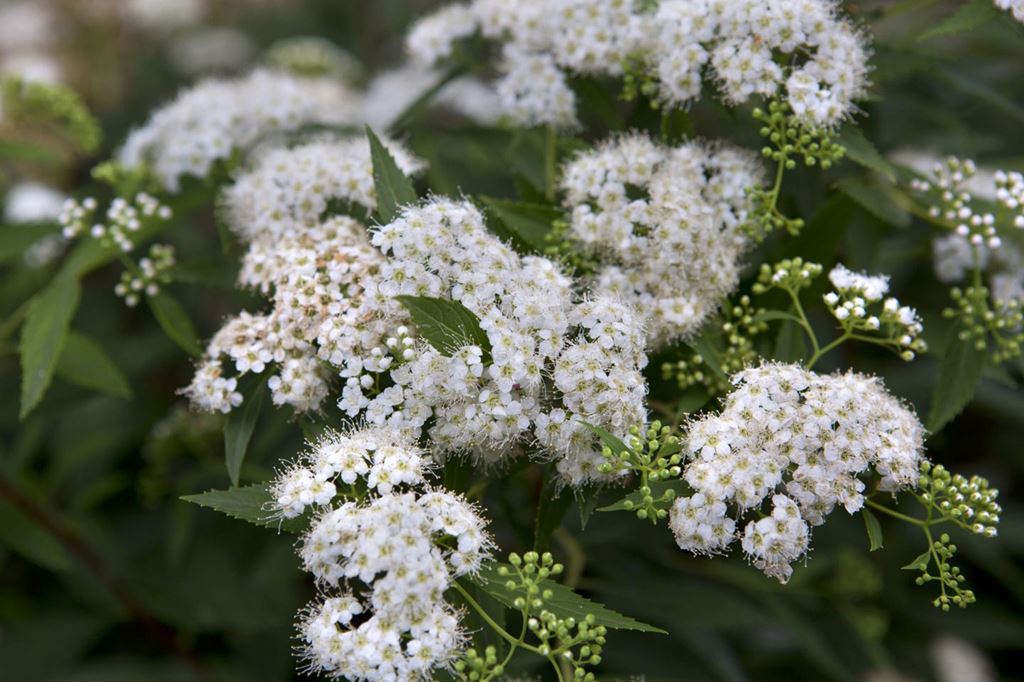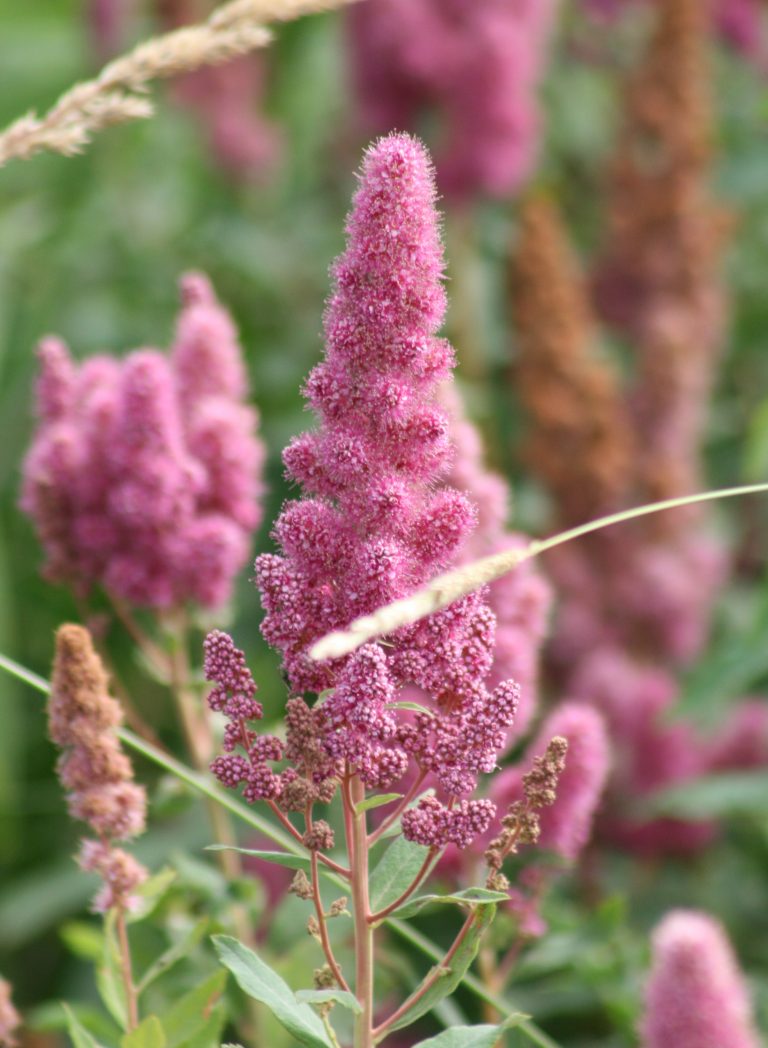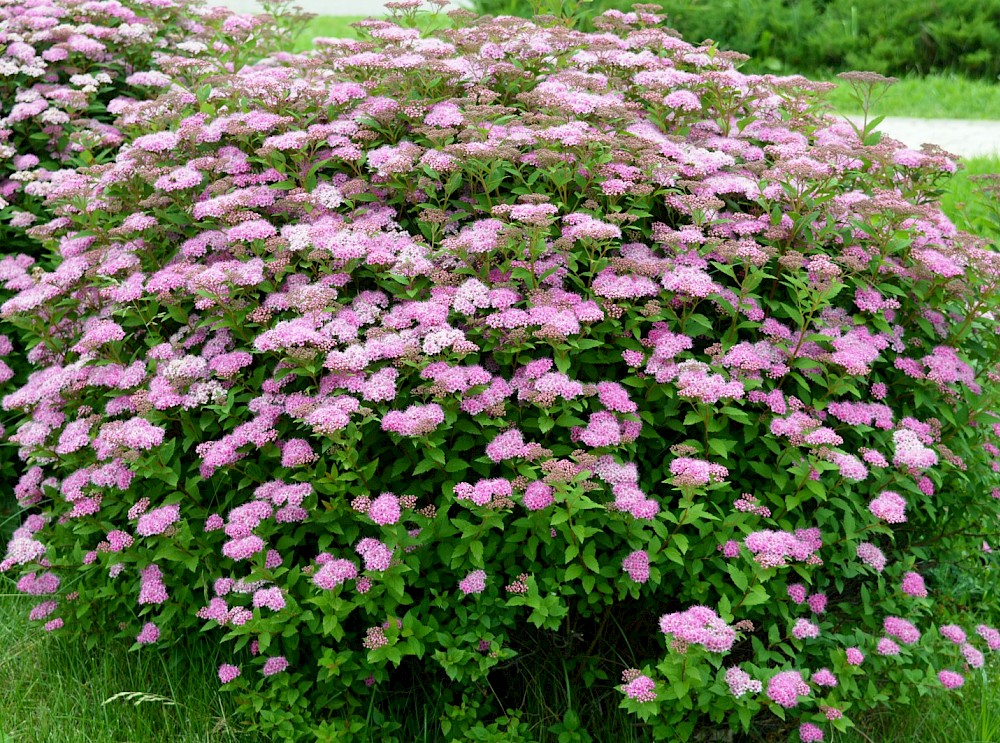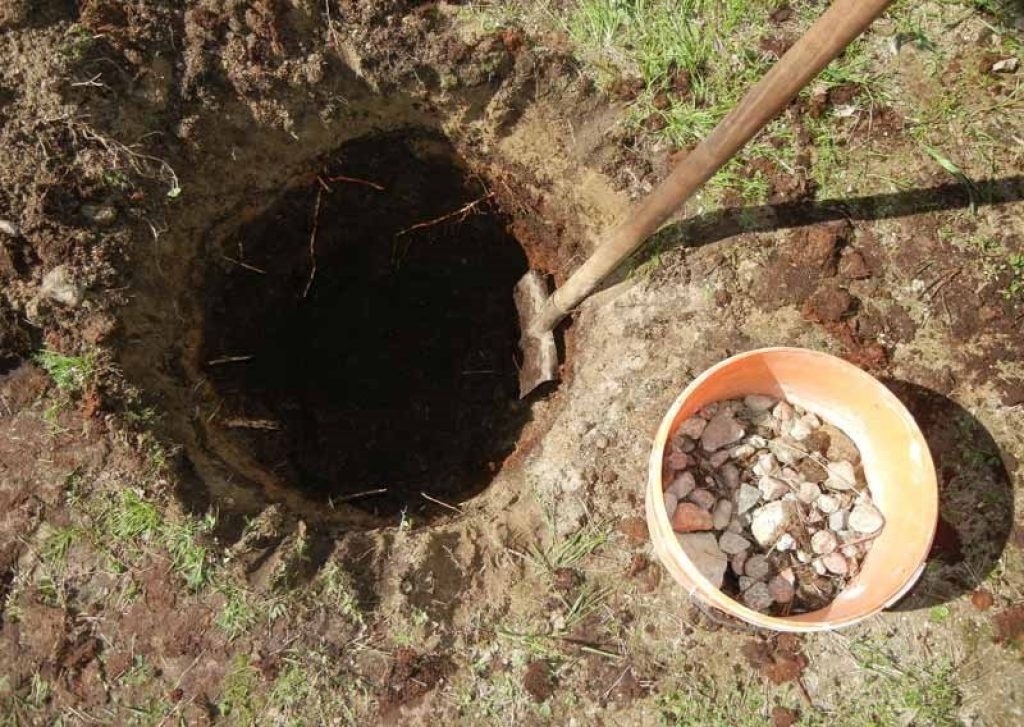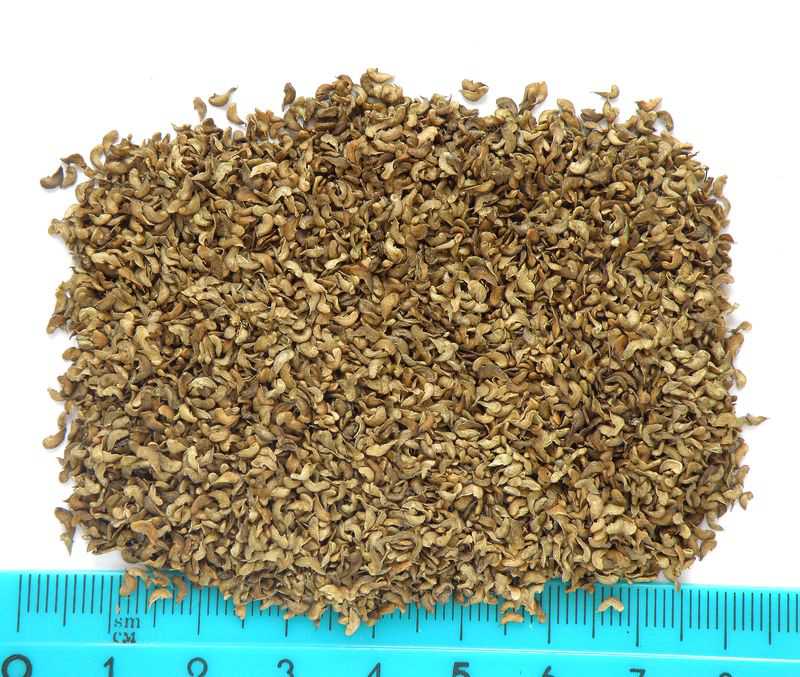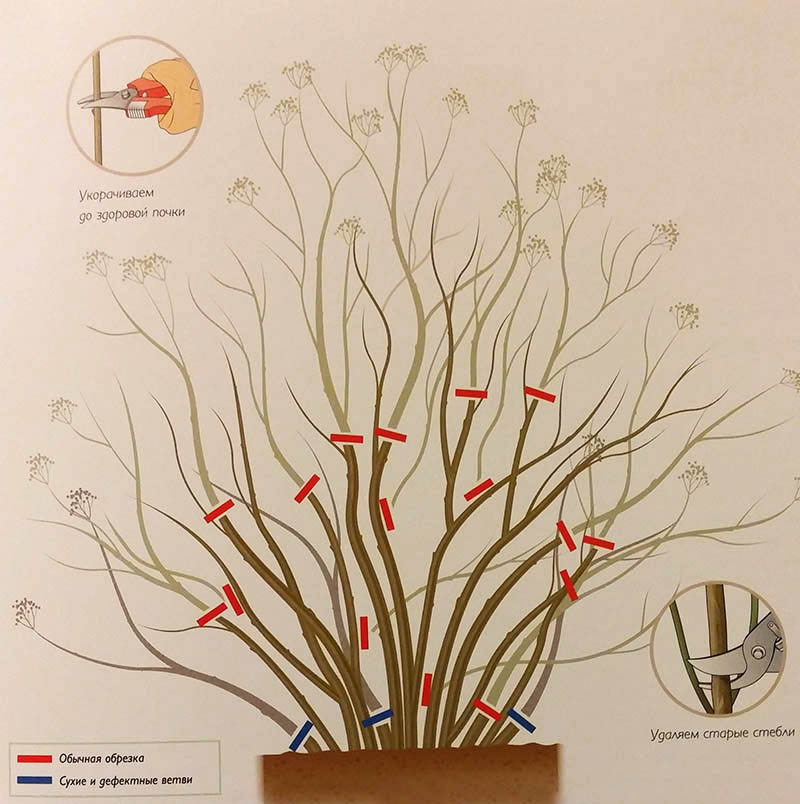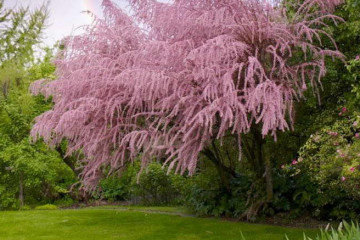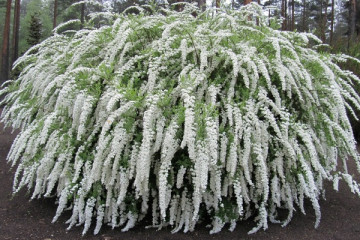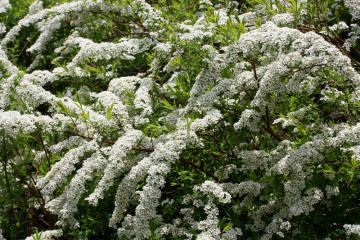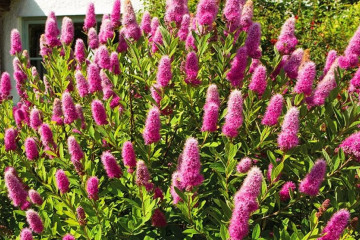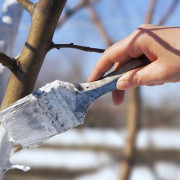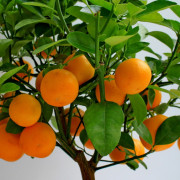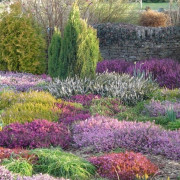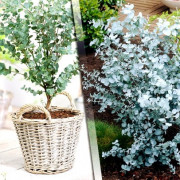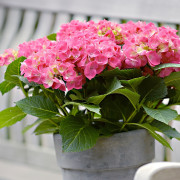Japanese spirea shrub or "Bride" - description
Content:
There are plants that are extremely easy to care for, and the flowering is amazingly beautiful. These include the spirea shrub, better known as meadowsweet. While gardeners admire the ornamental plant, breeders are developing more and more interesting varieties of hardy shrubs.
Origin
Spirea (Spiraea), she is meadowsweet, belongs to the Pink family (rosaceae) and is an ornamental shrub. The plant is distinguished by the flexibility of the stems, for which it got its name - "speira" in translation from ancient Greek means "bend". The genus includes about a hundred species of spirea growing in forest-steppe, steppe zones and even in semi-deserts. No wonder meadowsweet is considered a very unpretentious plant.
The name "meadowsweet" was much more widespread in the old days than spirea. Under this name, the shrub is mentioned in the epic "Sadko" and in the works of VI Dal, who reported that the stems of the plant, thanks to their strength, are used to make ramrods and whips.
The spirea shrub also has a name - the bride. It means varieties with white flowers. This same plant has variants of the names "spray bush" and "spire bush".
Plant appearance
The external features of the spirea shrub depend on the specific species. For example, the height of the stems varies from 15 cm to 2.5 m. The meadowsweet stems can be erect or creeping, from light to dark brown. The bark may flake off longitudinally.
The root system is fibrous, located, as a rule, shallow.
Spirea leaves are petiolate, alternately arranged, three, - or five-lobed. The shape of the plates is lanceolate or round.
Inflorescences are spicate, corymbose, pyramidal or paniculate, consisting of many small flowers. They are located, depending on the type, along the edges, in the middle or all along the branches. The color of the flowers is from deep burgundy to pure white.
Spring flowering spireas
Shrub species that show their flowers in spring are heavily bushy. Inflorescences appear only on second-year branches. The petals of spring spirits are distinguished by delicate colors. Gardeners love these varieties of meadowsweet for their early flowering.
Spirea Wangutta
A hybrid obtained by crossing the Cantonese and three-lobed spirea. It blooms at the very beginning of summer. Hemispherical inflorescences are located throughout the branch, they consist of small (about 6 mm) white flowers.
The shrub itself is quite high - up to 2 m. The branches are drooping, dotted with three-lobed, toothed bare leaves. Above the plates are painted in dark green, below - in gray. In autumn they acquire a wonderful orange color.
For its delicate coloration and graceful curves, this plant is often called the "shrub bride".However, this name is extended to other types and varieties of spirea, which have a white or light color of flowers.
Spirea oak-leaved
A tall (up to 2 m) variety of spirea, with gracefully curving branches, strewn with white inflorescences at the time of flowering.
This shrub is also called the bride, the plant fully justifies the popular name, and not only beauty, but also splendor. Due to the spreading branches, it takes up quite a lot of space.
Spirea nippon
Nippon, that is, Japanese, this spirea is called because of its place of origin - the island of Honshu. The shrub is quite high, up to 180 cm, dense branches are arranged horizontally. Green leaves, up to 4.5 cm long, do not change their color until late autumn.
Inflorescences are corymbose, dense, composed of greenish-yellow flowers, while unopened buds are pink in color. Spirea Nipponskaya blooms from the first days of June to mid-summer.
Spirea Thunberg
It is a graceful shrub up to 1.8 m tall, with small dark green leaves that turn orange-red in autumn. Inflorescences are umbellate, located along the entire length of the branches. The flowers are small, snow-white, shaped like stars.
Spirea crenate
Low shrub (about 1 m) with white flowers, collected in corymbose inflorescences. The leaves are dark green, with three prominent veins. The flowering period is approximately 20 days. Hardy, tolerates shading well, but gives more inflorescences in sunny places.
Spirea gray
An interesting hybrid, the result of crossing St. John's wort and whitish-gray spirea. The height of the bush is about 180 cm. The branches are drooping, with greenish-gray (glaucous below) lanceolate leaves. For their color, the gray spirea shrub got its name. Blooms from the second decade of May to mid-June.
The flowers are bright white, collected in corymbose inflorescences, located along the entire length of the branches.
Summer blooming spireas
Spireas, which bloom in the summer, have one feature: flowers appear on young shoots, old ones dry out over time. Among the variety of species, Japanese spirea is especially prominent, the varieties of which have gained particular popularity among gardeners.
Spirea willow
Tall (up to 2 m) shrub with straight brownish-brown shoots. The leaves are pointed, about 10 cm long. Inflorescences are paniculate-pyramidal, up to 20 cm in length, composed of whitish or pink small flowers.
White-flowered spirea
A fairly tall shrub (up to 1.5 m) with fragrant white flowers. Pleases with flowering from the middle of summer. One of the few species of summer-flowering spirea with white petals.
Japanese spirea
The Japanese spirea shrub has a height of 100 to 150 cm. Shoots appear pubescent, but, growing, become naked. Leaves are ovoid, oblong, green on top and gray on the inside. Shield-paniculate inflorescences are formed along the edges of the branches and consist of small purple flowers.
Japanese spirea blooms, as a rule, in July.
Many people confuse the name of the spirea, mistakenly calling it Chinese. It is worth remembering that the homeland of this shrub is Japan.
Spirea Douglas
Shrub, up to one and a half meters high, with reddish-brown shoots pubescent on top. Leaves are oblong-lanceolate, 3 to 10 cm long. Inflorescences of Douglas spirea are paniculate-pyramidal, collected from dark pink flowers.
The beauty of the inflorescences can be enjoyed from June to mid-July to early August.
Spirea Bumald
This is a miniature (about 50 cm) hybrid of Japanese and white-flowered meadowsweet. Stems are erect, dotted with green leaves, which acquire a bright color in autumn. Blooms from July to late August.
The petals can be colored from pale pink to red, depending on the variety.
Spirea Billard
A hybrid from crossing the Douglas spirea and willow leaf. It can reach a height of 2 m. Leaf plates are broadly lanceolate, about 10 cm long. Narrow pyramidal-paniculate inflorescences, collected from bright pink flowers, can reach a length of 20 cm.
The shrub blooms from the second half of July.
Transplant after purchase
Spirea can be planted both in spring and in autumn, and in spring only summer-flowering varieties of shrubs are planted. It is very important to have time to land the bride before the buds bloom on the shoots.
When purchasing seedlings in the store, you need to inspect the roots and shoots. If they are strong enough and not damaged, you can safely plant a shrub on the site.
In autumn, the spirea is planted before the end of the leaf fall. For planting, they usually take bushes that are 3-4 years old. They are optimally suited for dividing.
What is needed
To plant the spirea you will need:
- Scissors for cutting off excess roots;
- Shovel;
- Drainage (for example, broken brick);
- Soil mixture;
- Irrigation water;
- Peat;
- Pruner.
Optimal location
Despite the general unpretentiousness of the shrub, it is advisable to choose a well-lit, spacious place with nutrient-rich soil for it.
If the choice is small, meadowsweet can also be planted on a rocky area, in partial shade near a fence, gate, or next to other shrubs.
Planting process
Spring planting bush brides step by step:
- A pit is prepared on the site, the volume of which is about a third larger than the volume of the root system of the seedling. It is advisable to do this a couple of days before the planned planting.
- Before planting, the seedling is placed in a bucket with a small amount of water.
- Drainage is laid out at the bottom of the pit, in a layer of about 20 cm.
- Combine 2 parts of leafy soil with 1 part of sand and 1 part of peat. Pour the resulting mixture to the bottom of the pit.
- Place a seedling in the hole, gently spread the roots. Cover them with earth, gently tamping them with your hands. The root collar should be flush with the soil surface.
- Water the seedling with water (it will take 18-20 liters) and mulch the near-trunk circle with peat.
Autumn planting of spirea in stages:
- Three, - or a four-year-old bush to dig out of the ground.
- Wash the root system in running water.
- Divide the bush into 3 parts using a pruner.
- Prepare the landing pits.
- Put drainage on the bottom, pour soil mixture.
- Plant the plants, gently cover the roots with earth and tamp.
- Water the planting abundantly with water.
Reproduction of spirea
Spirea is best propagated by cuttings, since hybrid varieties do not retain their characteristics during seed propagation.
Cuttings
Spring-flowering plants propagate by cuttings in early June, summer-flowering plants in July. It is best to root cuttings in September-October.
Spirea cuttings:
- Cut the one-year straight stem and cut it into pieces, so that each leaves 5-6 leaves.
- Remove the lower leaves together with the cuttings, cut the upper ones by half.
- Place the cuttings in Epin's solution for 12 hours.
- Dip the lower knot in Kornevin's solution and plant the cutting in a container with moistened sand so that it is tilted at an angle of 30-45 °.
- Cover the container with foil or glass, remove to a dark place.
- Spray 2 times every day with a spray bottle, make sure that the sand remains moist.
After the start of frost, the cuttings are dropped on the site, covered with leaves and an inverted box is installed on top. In this position, they are left until spring.
When new shoots appear on the plants, you can transplant them to a permanent place.
Seeds
In the species spirits, unopened, but already drying capsules with seeds are collected in the summer. The fruits are sent to ripen for a couple of weeks in a dry place (for example, in an open box).
After the specified time, the spilled seeds are collected and stored in a tissue bag until spring.
In April, the seeds are sown in a box with soil, sprayed with a spray bottle and, covered with glass, send the container outside. It is necessary to ensure that the earth does not dry out, but there is no stagnation of moisture either. When shoots appear, the glass can be removed.
Upon reaching a height of 2 cm, the seedlings dive, selecting the strongest ones, and plant them in a box, at a distance of 5-6 cm from each other. In the fall, they can be seated in permanent places.
Plant care
Photophilous spirea loves loose nutritious soils. Nevertheless, the plant is unpretentious in care and does not show any special "whims".
Watering
The bush is watered in dry season once a week for 14 days, 1.5 buckets of water under the bush. In rainy weather, watering is reduced.
Top dressing
Spirea is fed with complex mineral fertilizer in the spring season. In the summer, the shrub is fertilized with a mullein solution with the addition of 10 g of superphosphate per bucket of liquid.
Dormant period
When the bush has faded and autumn comes, it's time to start pruning. Old bushes are pruned, leaving hemp with 2-3 buds. On young shrubs, thickening crowns or diseased shoots are removed.
The soil at the roots is carefully loosened, and fertilizing is added if necessary. Any composition will do, except containing nitrogen and mullein. The land under the bush is watered abundantly.
Preparing for winter
Spirea roots withstand cold well, so it can winter without shelter. However, if too severe frosts are expected, the plant is sprinkled with dry foliage for the winter, with a layer of up to 15-20 cm.
Spirea is an excellent choice for beginners, because this shrub does not require complex care. But you can admire the flowering of this graceful plant for a long time. There will also be no problems with reproduction and rooting, so the spirea can be generously shared with neighbors.
